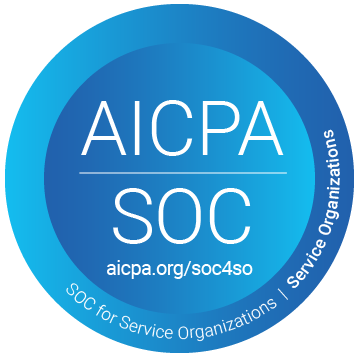
When managing business risks, understanding the differences between a Certificate Holder and an Additional Insured is critical to ensuring proper insurance coverage and protection. Here, we’ll break down these terms, explain their significance, and explore how businesses can leverage these distinctions to safeguard their operations. With Terra’s Compliance Management solution, businesses can simplify and automate the process of tracking these distinctions, minimizing risks and ensuring consistent compliance.
Certificate Holder vs. Additional Insured: Understanding the Distinction
One of the most immediate impacts of AI in workers’ compensation is the streamlining of claims processing. Traditionally, claims involve extensive paperwork and manual review, often leading to delays. AI automates these processes by:
- Certificate Holder: A Certificate Holder is an entity that has received a certificate of insurance (COI) as proof that a business holds an active policy. Being a Certificate Holder allows them to verify insurance coverage, but it doesn’t grant them any rights to make claims or receive coverage under the policy.
- Additional Insured: In contrast, an Additional Insured is an entity that is added to an insurance policy, giving them rights to claim and receive benefits under that policy. This inclusion is typically established by endorsement and extends coverage to protect the Additional Insured’s interests, often in relation to specific risks arising from their involvement with the policyholder’s operations.
Terra’s automated Certificate of Insurance tracking ensures your COI documentation is always up-to-date and readily accessible, minimizing the risk of missing key compliance obligations.
Why Understanding the Difference Matters
For businesses, mistaking a Certificate Holder status for being an Additional Insured can have serious consequences. A business may mistakenly believe themselves to be covered in situations where they are not, leaving them financially exposed.
The Benefits of Being an Additional Insured
Being listed as an Additional Insured on an insurance policy provides several important benefits:
- Protection from Liability: It extends liability coverage to the Additional Insured, protecting them from specific risks associated with the policyholder’s work or products.
- Direct Claims Rights: An Additional Insured can make claims on the policy, receiving protection and compensation for covered incidents.
- Legal Defense: In certain cases, the policyholder’s insurer may provide a defense to the Additional Insured in case of a lawsuit.
By utilizing Terra’s Compliance Management solution, businesses can streamline and document their Additional Insured statuses, ensuring they always have the correct level of protection without administrative hassle.
Examples of Scenarios Where a Business Needs to Be Listed as an Additional Insured
Several common scenarios warrant businesses being listed as an Additional Insured:
- Contractors and Subcontractors: If a contractor hires subcontractors, the subcontractor may need to add the contractor as an Additional Insured to ensure liability coverage.
- Property Leasing: When leasing property, landlords may require tenants to list them as Additional Insureds to cover risks tied to the tenant’s business activities.
- Business Partnerships: In partnerships, one company may require the other to list them as an Additional Insured for activities performed on their behalf.
Ensuring Proper Listing as an Additional Insured

- Clear Communication: Always request a copy of the COI and verify your business is listed as an Additional Insured, not just a Certificate Holder.
- Review the Endorsement: The specific insurance policy endorsement outlining your coverage as an Additional Insured should be reviewed for details.
- Verify Coverage Details: Always confirm that the coverage terms match what’s needed for the specific contract or project.
Terra’s automated workflows for endorsement review and COI management allow you to stay organized and verify coverage details effortlessly.
The Risks of Misunderstanding the Distinction
If a business mistakes Certificate Holder status for Additional Insured status, it may lack essential protection, leaving it vulnerable to unexpected claims or legal costs. Ensuring clarity in these terms can prevent costly coverage gaps.
The Impact on Contract Agreements
Contracts often have insurance coverage requirements. Understanding the difference between a Certificate Holder and an Additional Insured helps businesses negotiate their desired level of protection within contracts.
What to Look for in an Insurance Policy
Several common scenarios warrant businesses being listed as an Additional Insured:
- Additional Insured Endorsement: Verify the presence of an endorsement specifically listing your business as an Additional Insured.
- Coverage Details: Review the policy wording of the endorsement to understand the specific coverage limitations and exclusions.
- Limits and Exclusions: Check for any limitations that might restrict the Additional Insured’s coverage.
Terra’s platform provides centralized access to policy details and endorsements, enabling quick and easy reference for coverage and exclusions.
How Our Platform Helps Businesses Manage Certificate Holders and Additional Insureds
Our platform streamlines the process of managing Certificate Holders and Additional Insureds by:
- Tracking Insurance Requirements: Easily manage and track all COIs and Additional Insured requests, ensuring compliance with contract obligations.
- Automated Renewal Reminders: Keep coverage up-to-date with automated reminders for policy renewals, reducing the risk of lapses.
- Risk-Free Guarantee: Try our platform with a 30-day money-back guarantee. No questions asked if you aren’t fully satisfied.
Don’t leave your business’s financial security to chance. With Terra’s comprehensive solution, you can efficiently manage Certificate Holders and Additional Insureds, ensuring your coverage meets every contractual obligation. Contact us today to learn more!



